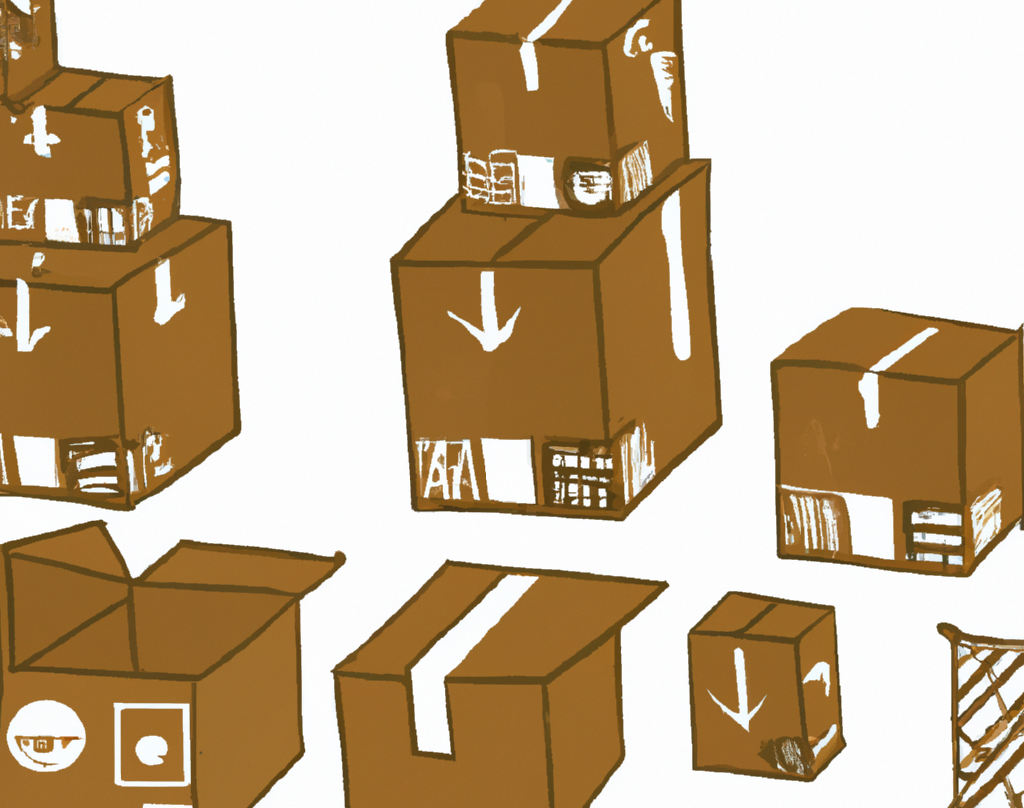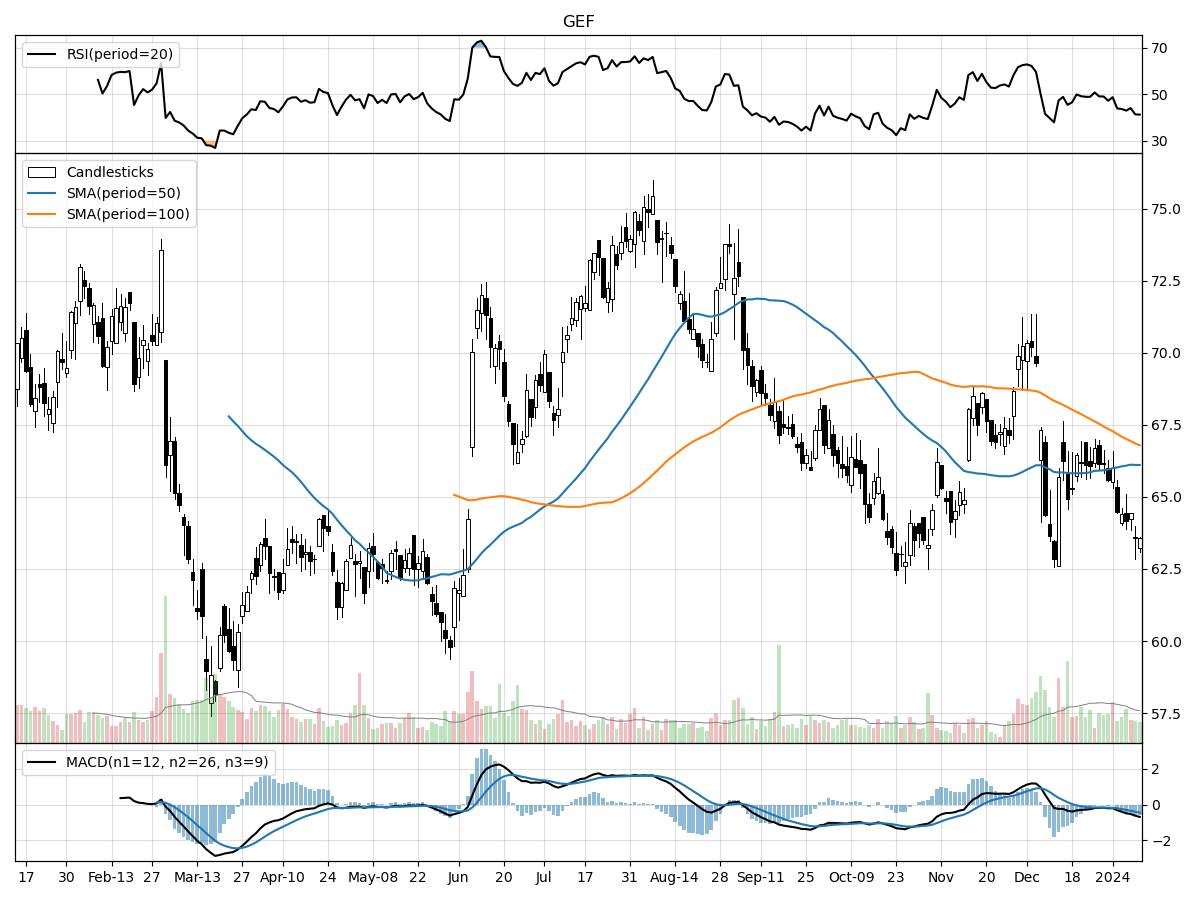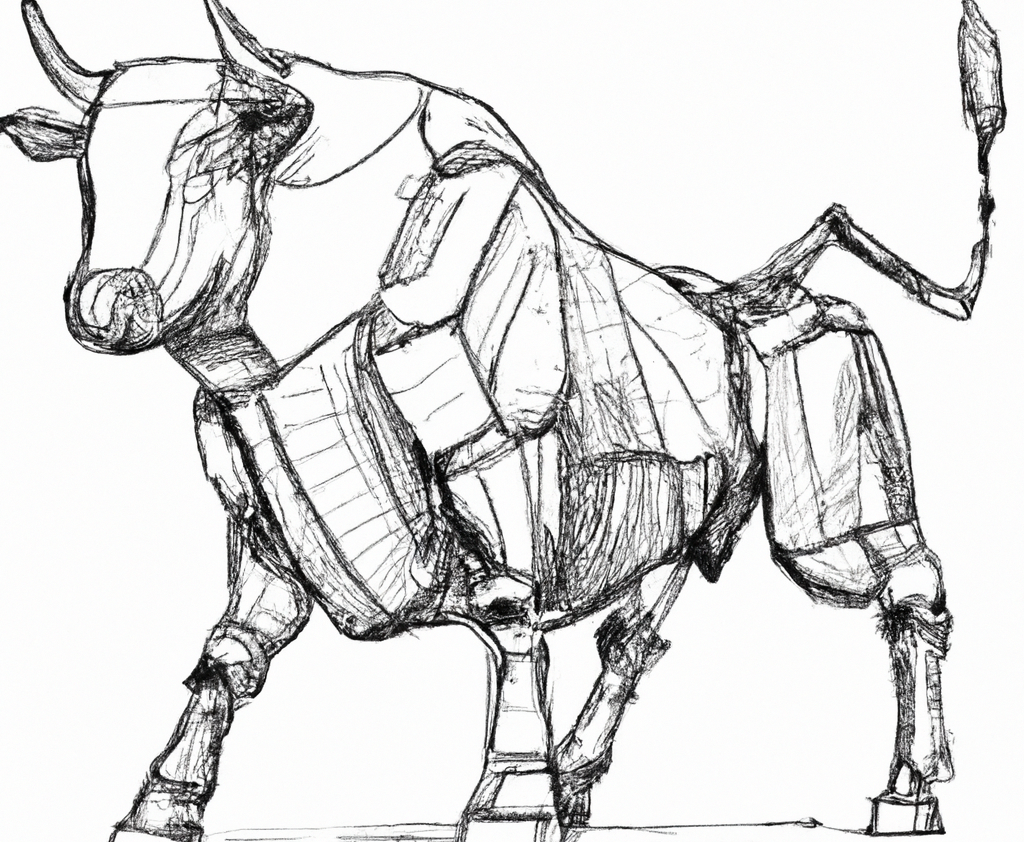Greif, Inc. (GEF), Mid/Small Cap AI Study of the Week

January 11, 2024
Weekly AI Pick from the S&P 400 or S&P 600
Grief, Inc. (GEF)
Company Overview
Greif, Inc. is a global leader in industrial packaging products and services, with operations spanning over 35 countries. The company's product portfolio includes industrial packaging solutions, containerboard, and corrugated products, accompanied by services like logistics and container life cycle management. In addition to its packaging segment, Greif has a Paper Packaging & Services segment focused on paperboard and corrugated containers, primarily catering to the North American market. The company also manages timberland properties for timber harvesting and sales. Greif prides itself on not being overly reliant on any single customer, and it competes based on design, quality, service, and cost.
The company adheres to strict environmental, health, and safety regulations, and has integrated a strong safety culture within its operations. Greif does not expect significant impacts from compliance with these regulations on its financials and anticipates no major environmental control capital expenditures in 2024. Human capital is a key aspect of Greif's "Build to Last" strategy, aiming to excel in customer service and create a safe, diverse, and inclusive workplace that promotes talent development. With approximately 12,000 employees, Greif operates in various regions including North and Latin America, Europe, Middle East, Africa, and Asia Pacific, and is listed on the New York Stock Exchange.
Recently, Greif announced its plans to acquire Ipackchem, a specialist in high-performance plastic packaging for $538.0 million, a transaction expected to be finalized by October 31, 2024. Ipackchem operates in 12 facilities across nine countries and serves sectors like crop protection, specialty chemicals, and pharmaceuticals. The acquisition, which will be financed through existing credit facilities, is not without risks. Challenges include obtaining regulatory approvals, successfully integrating Ipackchem, realizing financial synergies, and navigating broader market and competitive risks as detailed in Greif's 10-K filing.
By the Numbers
Annual 10-K Report Summary:
- Net sales: Decreased to $5,218.6 million in 2023 from $6,349.5 million in 2022.
- Gross profit margin: Improved slightly to 22.0 percent.
- Gross profit: Fell to $1,146.1 million from $1,285.4 million.
- Operating profit: Dipped to $605.5 million from $621.2 million.
- Net income: Decreased to $379.1 million from $394.0 million.
- Adjusted EBITDA: Decreased to $818.8 million from $917.5 million.
- Global Industrial Packaging segment net sales: Fell by $715.6 million to $2,936.8 million.
- Paper Packaging & Services segment net sales: Decreased by $414.6 million to $2,260.5 million.
- Income tax expense: Decreased by $19.3 million.
- Cash flow from operating activities: Slightly decreased to $649.5 million from $657.5 million.
- Cash used in investing activities: Increased to $670.2 million.
- Net cash provided by financing activities: $69.7 million in 2023.
- Long-term debt: Increased to $2,121.4 million from $1,839.3 million.
- Goodwill: Increased from $1,464.5 million in 2022 to $1,693.0 million in 2023.
Quarterly 10-Q Report Summary:
- Net sales for Q3 2023: Decreased to $1,330.3 million from $1,622.1 million in Q3 2022.
- Net income for Q3 2023: Fell to $96.7 million from $146.1 million in Q3 2022.
- Global Industrial Packaging segment adjusted EBITDA for Q3 2023: Increased slightly to $126.5 million from $117.1 million.
- Net sales for the nine-month period ending July 31, 2023: Dropped to $3,910.2 million from $4,853.7 million.
- Operating profit for the nine-month period: Increased to $493.1 million from $467.8 million.
- Adjusted EBITDA for the nine-month period: Decreased to $619.6 million from $698.8 million.
- Cash flows from operating activities for the nine-month period: Increased by $75.1 million.
- Income tax expense for Q3 2023: $31.1 million on $126.9 million of pretax income.
- Income tax expense for the nine-month period: Increased marginally by $2.5 million.
Stock Performance and Technical Analysis

The technical analysis of a stock involves scrutinizing past market data, primarily through the use of charts, to forecast future price movements. In the case of the stock in question, several indicators give us insight into its performance and potential future direction.
The current stock price is 63.56, which is 9% above its 52-week low, suggesting that the stock has some support above its lowest price level in the past year. This can be seen as a positive sign as it indicates that the stock has rebounded to some extent from its lows, indicating some buying interest at lower levels. However, the stock is also trading 15% below its 52-week high, which may signal that there has been a significant pullback from the peak, and the stock could be experiencing a downward trend or consolidation phase.
Volume is a key indicator in technical analysis, as it provides clues about the strength of a price movement. The recent daily volume is higher than the longer-term average, which might suggest increased interest in the stock. However, this higher volume combined with price stability over the last month and three months could indicate a consolidation phase, where the stock is trading within a certain range without a clear trend.
The Money Flow indicators point toward moderate selling pressure and distribution, which typically means that the stock is being sold by investors more than it is being bought, potentially leading to a downward price movement. Moreover, the Moving Average Convergence Divergence (MACD) is bearish at -0.45. The MACD is a trend-following momentum indicator that shows the relationship between two moving averages of a stock's price. A bearish MACD indicates that the short-term momentum in the stock is declining relative to its long-term momentum, which could suggest that the stock is likely to experience further declines.
Overall, the technical analysis suggests caution. The combination of the stock trading below its 52-week high, bearish MACD, and money flow indicators pointing to selling pressure and distribution could indicate that the stock may continue to face headwinds in the near term. Investors should consider these signals in the context of the broader market and other fundamental factors before making any investment decisions.

The ‘Bull’ Perspective
Greif, Inc. (GEF): A Robust Investment Opportunity Amidst Economic Uncertainty
Summary:
- Steady Performance in Volatile Markets: Despite a challenging economic landscape, Greif has demonstrated resilience with a slight increase in the Global Industrial Packaging segment's adjusted EBITDA from $117.1 million to $126.5 million.
- Strategic Acquisitions and Market Positioning: Greif's strategic acquisitions have expanded its market reach, positioning the company to capitalize on future growth opportunities.
- Strong Cash Flow and Financial Position: The company's cash flows from operating activities increased by $75.1 million, showcasing strong liquidity and a robust financial position.
- Adaptability to Market Risks: Greif has shown adaptability to risks such as raw material price volatility and competitive pressures, indicating a management team that is proactive and strategic.
- Potential for Value Creation: With a focus on operational improvements and cost management, Greif presents potential for long-term value creation for investors.
Elaboration:
- Steady Performance in Volatile Markets:
In the face of economic headwinds, Greif has exhibited a commendable steadiness, particularly in its Global Industrial Packaging segment. The slight increase in adjusted EBITDA to $126.5 million in this segment is indicative of the company's ability to maintain profitability even when net sales experience a downturn. This resilience is critical in an industry marred by supply chain disruptions and fluctuating demand. With the S&P 500's recent pause in gains, Greif's stability becomes an even more attractive quality for investors seeking shelter from market volatility. - Strategic Acquisitions and Market Positioning:
Greif's recent acquisitions, including those of Lee Container, Centurion Container, and ColePak, have not only expanded its product offerings but also its geographical footprint. These strategic moves are expected to yield synergies and enhance the company's competitive edge. Despite the risks of integration, the company's track record suggests that it can effectively manage these processes to bolster its market position. This strategic foresight is particularly important as the industry faces competitive pressures and consolidation. - Strong Cash Flow and Financial Position:
The increase in operating cash flows by $75.1 million is a testament to Greif's financial health. This robust cash generation enables the company to invest in growth initiatives, maintain equipment, and return value to shareholders through dividends and share repurchases. Greif's liquidity position, supported by various credit facilities, is a significant advantage, especially considering the current global financial uncertainties that could impact customer credit and order volumes. - Adaptability to Market Risks:
Greif's adaptability to market risks is evident in its ability to navigate raw material price volatility and competitive pressures. The company's cost management efforts and operational efficiencies have helped mitigate the impact of increased costs and preserve margins. This adaptability is crucial as the industry contends with potential disruptions from geopolitical events, such as the conflict in Ukraine, and broader economic challenges. - Potential for Value Creation:
Greif's focus on operational improvements and rationalization efforts, despite the associated risks of production disruptions, suggests a commitment to long-term value creation. The company's proactive approach to managing environmental regulations and sustainability trends also positions it favorably in an increasingly eco-conscious market. While goodwill impairment is a risk, Greif's strategic initiatives could lead to increased profitability and shareholder value over time.
In conclusion, Greif, Inc. presents a compelling investment opportunity for those looking for a company with a track record of weathering economic storms, strategic growth initiatives, and strong financials. The company's adaptability to risks and focus on value creation make it well-positioned to capitalize on market opportunities and deliver returns to shareholders.

The ‘Bear’ Perspective
Why Investors Should Exercise Caution with Greif, Inc. (GEF)
- Declining Sales and Profits: Greif has reported a significant decrease in net sales and net income in its latest quarterly report, signaling potential underlying issues.
- Competitive Pressures and Market Share Concerns: The company faces intense competition which could lead to further erosion of market share and profitability.
- Raw Material Price Volatility: Fluctuations in the prices of key raw materials pose a risk to Greif's cost structure and margins.
- Regulatory and Environmental Risks: Increasing regulatory burdens and environmental concerns could lead to higher operating costs and capital expenditures.
- Global Economic and Political Uncertainties: Geopolitical tensions and global financial instabilities present risks that could disrupt Greif's international operations and financial performance.
- Declining Sales and Profits
In the most recent quarterly report, Greif, Inc. observed a worrying trend with net sales falling to $1,330.3 million, a stark contrast to $1,622.1 million from the same period the previous year. Net income also took a hit, dropping to $96.7 million from $146.1 million year-over-year. These numbers are not to be taken lightly as they could be indicative of deeper issues within the company or sector. Investors should be particularly cautious as continued declines could signal systemic problems that may not be easily reversible, affecting long-term shareholder value. - Competitive Pressures and Market Share Concerns
Greif operates in a highly competitive industry where price, quality, and service are key differentiators. With competitors possibly offering more attractive alternatives, Greif's market share could be at risk. The company's recent performance suggests that it may be struggling to keep up with these pressures, which could further impact its financial health. The company's attempts to retain its market position through acquisitions come with their own risks, including integration challenges and the potential to not deliver the expected value. - Raw Material Price Volatility
The company's margins are particularly sensitive to the prices of steel, OCC, and oil, which have been known to be volatile. Any unexpected increase in these costs can quickly erode profits, as seen in the past quarters. For instance, if the price of steel, a key input for Greif's industrial packaging products, were to rise substantially without a corresponding ability to pass these costs on to customers, the company's financial results could suffer significantly. - Regulatory and Environmental Risks
Environmental regulations are tightening globally, and any potential greenhouse gas rules could impose significant costs on Greif. The company's latest report does not guarantee the ability to recoup these expenses, which could mean absorbing additional costs that would otherwise contribute to profits. With a valuation of $1,693.0 million in goodwill at risk of impairment, any additional financial strain could lead to a notable negative impact on the company's balance sheet and investor confidence. - Global Economic and Political Uncertainties
Greif's international operations expose it to risks such as political instability, currency fluctuations, and trade disruptions. The ongoing conflict in Ukraine and other geopolitical tensions could have unforeseen consequences on the company's operations. Furthermore, global financial uncertainties could impact customer credit and order volumes, posing a threat to Greif's cash flow and access to capital. These factors could lead to significant disruptions in operations and should be a red flag for investors.
In conclusion, while Greif, Inc. has shown resilience in the past, current trends and external factors present a series of challenges that could potentially undermine the company's financial stability and growth prospects. Investors should carefully consider these risks and maintain a cautious stance when evaluating the company's stock for their portfolios.




Comments ()